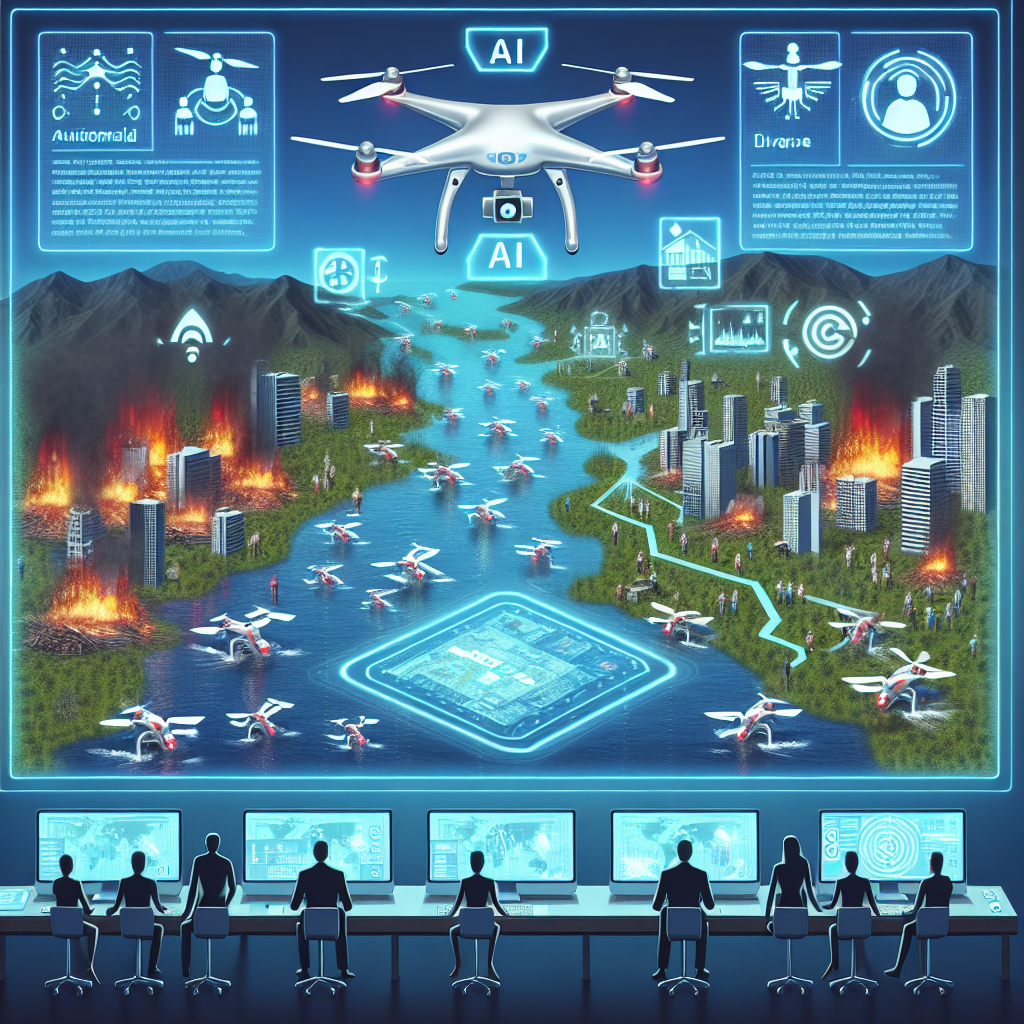In recent years, the use of artificial intelligence (AI) solutions in disaster response planning has become increasingly prevalent. AI has the potential to revolutionize the way emergency responders prepare for and respond to natural disasters, such as hurricanes, earthquakes, wildfires, and floods. By harnessing the power of AI, organizations can better predict, prepare for, and respond to disasters, ultimately saving lives and reducing the impact of these catastrophic events.
One of the key ways AI can enhance disaster response planning is through predictive analytics. By analyzing vast amounts of data from various sources, including weather patterns, historical disaster data, and social media posts, AI can help identify potential disaster risks and predict when and where disasters are likely to occur. This information can then be used to develop more effective response plans, allocate resources more efficiently, and mobilize emergency responders in a timelier manner.
Another way AI can improve disaster response planning is through real-time monitoring and situational awareness. By using sensors, drones, and other technologies equipped with AI capabilities, emergency responders can gather real-time data on disaster events as they unfold. This data can help them track the movement of a hurricane, assess the extent of damage caused by an earthquake, or monitor the spread of a wildfire. By having access to this real-time information, emergency responders can make more informed decisions and respond more effectively to disasters.
AI can also enhance communication and coordination among different agencies involved in disaster response. By using AI-powered communication tools, emergency responders can share information, coordinate resources, and collaborate more effectively during a disaster. This can help ensure a more coordinated and efficient response, ultimately saving more lives and reducing the impact of the disaster.
Furthermore, AI can assist in post-disaster recovery efforts by analyzing data on damage assessment, resource allocation, and rebuilding efforts. By using AI algorithms, organizations can quickly assess the extent of damage caused by a disaster, prioritize areas in need of assistance, and optimize the allocation of resources for recovery efforts. This can help communities recover more quickly and efficiently after a disaster strikes.
Overall, AI solutions have the potential to greatly enhance disaster response planning by providing better predictive capabilities, real-time monitoring, improved communication and coordination, and more efficient post-disaster recovery efforts. By leveraging the power of AI, organizations can better prepare for and respond to disasters, ultimately saving lives and reducing the impact of these catastrophic events.
FAQs:
Q: What types of data can AI analyze to improve disaster response planning?
A: AI can analyze a wide range of data, including weather patterns, historical disaster data, social media posts, satellite imagery, sensor data, and more. By analyzing this data, AI can help identify potential disaster risks, predict when and where disasters are likely to occur, and provide real-time information on disaster events as they unfold.
Q: How can AI improve communication and coordination among different agencies involved in disaster response?
A: AI-powered communication tools can help emergency responders share information, coordinate resources, and collaborate more effectively during a disaster. By using AI to facilitate communication and coordination, organizations can ensure a more coordinated and efficient response to disasters.
Q: How can AI assist in post-disaster recovery efforts?
A: AI can help in post-disaster recovery efforts by analyzing data on damage assessment, resource allocation, and rebuilding efforts. By using AI algorithms, organizations can quickly assess the extent of damage caused by a disaster, prioritize areas in need of assistance, and optimize the allocation of resources for recovery efforts.
Q: What are some examples of AI solutions being used in disaster response planning?
A: Some examples of AI solutions being used in disaster response planning include predictive analytics for disaster risk assessment, real-time monitoring using drones and sensors, AI-powered communication tools for coordinating emergency responders, and AI algorithms for analyzing data on post-disaster recovery efforts.

